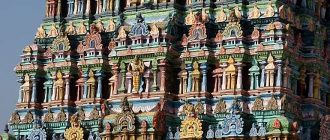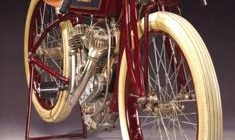Want to learn more about animals in traditional Indian paintings? Read on for facts and info on how animals were depicted in traditional Indian paintings and their meanings…
Animals have been a part of the local Hindu religious mythological legends for three millennia with some mythological creatures such as the monkey king Hanuman and the elephant god Ganesh helping the Hindu gods and goddesses through their journeys and travails. Before that animals also featured prominently in some of the oldest preserved civilizations in Mohenjodaro and Harappa as well as the even older rock sculptures of Bhimbetka. Mughal miniature art also featured animals such as horses, elephants, tigers, and rhinoceros in hunting scenes as well as peacocks, doves, and hunting falcons.
Animal Cave Paintings from Bhimbetka
The Bhimbetka Rock Shelters are a World Heritage Site near Bhopal in the Indian state of Madhya Pradesh and date from the Neolithic era. More than seven hundred rock shelters have been found with a vast majority of them featuring scenes from the inhabitants’ lives. Red and white colors are predominantly used with green and yellow also being utilized.
Hunting scenes are very popular and there are pictures of people riding horses and elephants, animals fighting each other, scenes of honey collection, and lively depictions of wild animals such as tigers, lions, wild boar, bisons, crocodiles, lizards, deer, antelope, monkeys, and dogs. Some of the paintings have been dated to be as old as twelve thousand years.
Animal Portrayals from Mohenjodaro and Harappa
Mohenjodaro is one of the oldest civilizations whose ruins have been found and the city was discovered in the Pakistani province of Sindh in 1922. The extremely well-preserved ruins flourished at their peak for seven hundred years starting from four thousand six hundred years ago. Traces as old as five and a half millennia old have been found of the Indus Valley civilization and settled cities have been found in Mohenjodaro; Harappa near Sahiwal in Punjab, Pakistan; Mehrgath in Baluchistan near the Iranian-Pakistani border; and Lothal in Rajasthan, India.
Oxen and buffaloes are the most prominent animals found among the terracotta figurines recovered from the Indus Valley and the agricultural people of the civilization were obsessed with portrayals of harvest and fertility in their sculptures, ornaments, and children’s toys. Oxen are also portrayed drawing carts and there are examples of the humped zebu cattle from Sindh and Punjab. Other animals featured include rams, bears, cats, deer, rhinoceros, elephants, monkeys, hare, markhor wild goats, dogs in various poses, and birds of generally non-descript nature.
Animals in the Ajantha and Ellora Cave Paintings
The Ajantha cave paintings in Maharashtra, India have been dated to be as old as nineteen hundred years. These are a set of twenty nine caves featuring the supposed reincarnations and teachings of Gautama Buddha. Cave nineteen shows mounted riders and lion heads and cave twenty four has Buddha sitting on a lion throne.
The thirty-four caves of Ellora sculpted between the seventh and ninth centuries have mostly Buddhist motifs and the central caves have Hindu sculptures while there is also some Jain artwork. As Buddhist influence declined in the country, the caves were appropriated for use by other religions. Cave fifteen which was converted to Shiva worship from its Buddhist beginnings features lions flanking a fluted column and cave twenty one has Durga slaying the buffalo demon.





